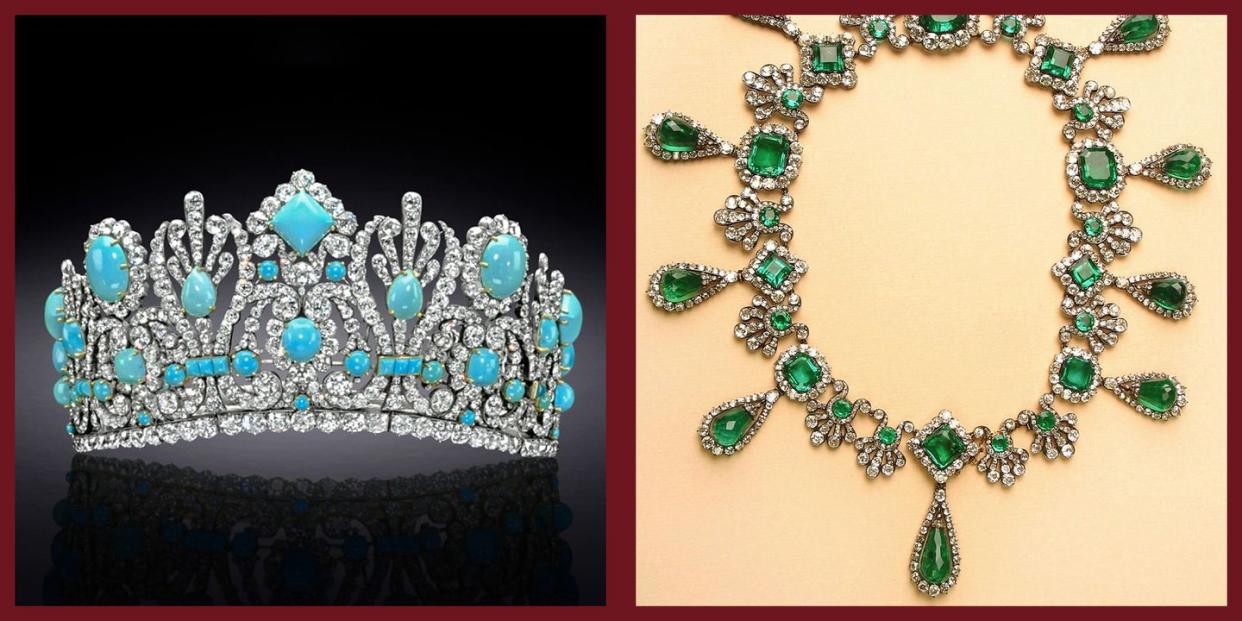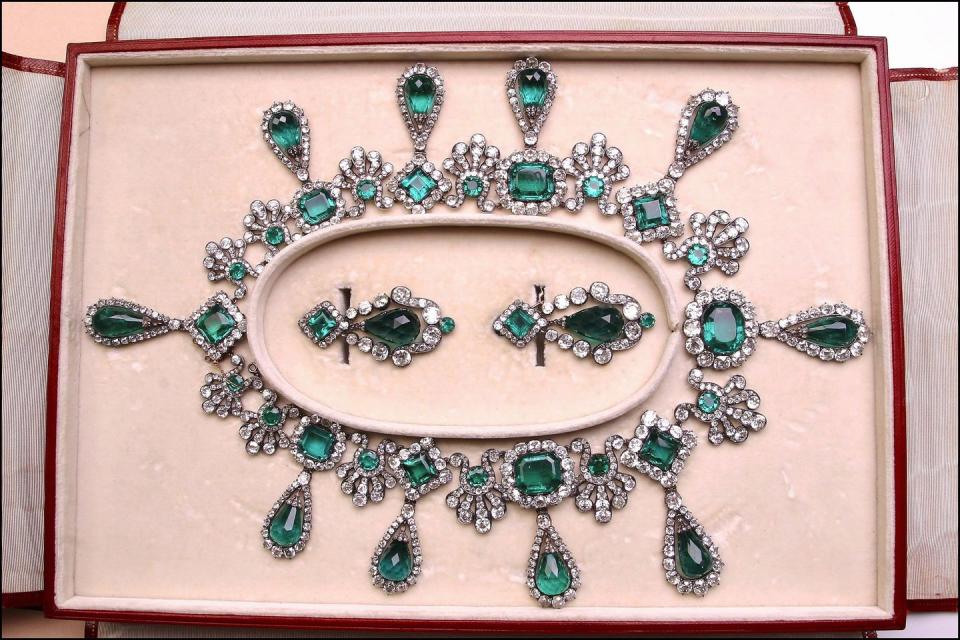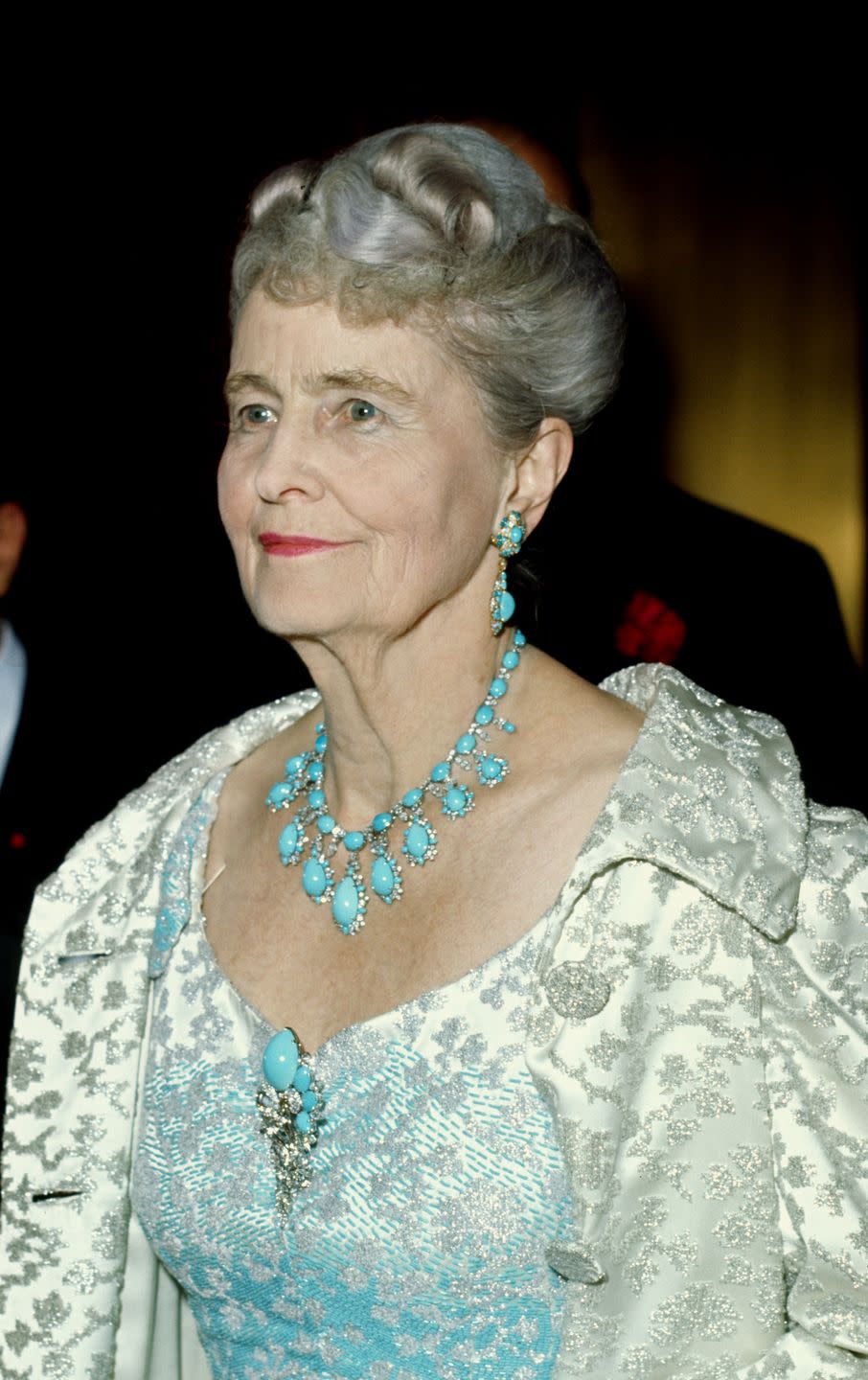How an Emerald Tiara Napoleon Gave His Wife Ended Up in America—Without the Emeralds

- Oops!Something went wrong.Please try again later.
This is my favorite kind of jewelry story, the tale of a jewelry twist of fate. How do some pieces stay intact for centuries and others become dismantled, sold off as “parts,” lost forever to history? This tiara chronicle offers a bit of both scenarios.
The turquoise and diamond diadem pictured above began as wedding gift from Napoleon to his second wife Marie Louise of Austria, in 1810; there was also a comb, a necklace, and earrings. But there was no turquoise in it at the time—it was, when Bonaparte presented it to his bride, fitted instead with 79 emeralds.
It left France with its owner when her husband’s empire collapsed and remained with her family until 1953, when a descendent sold it to Van Cleef & Arpels. It was exhibited in the firm’s window and soon pictured in a newspaper seductively offering “an emerald for you from the Napoleonic tiara.”

Provenance-mad clients bought up the Emperor’s emeralds and Persian turquoise (considered the best) was soon placed in the original frame. Swapping turquoise for emeralds? Selling off historical artifacts? Debate ensued. Many defended the action as giving the jewels a new chapter and offering a whole new generation of jewelry lovers the ability to wear and keep history alive. "People out there, maybe even someone you know, could be walking around with Napoleon’s emerald on their finger," someone once pointed out to me.
The emeralds do, in fact, continue to circulate—in 2014 one appeared at auction clearly marked as such in the catalogue. And the turquoise tiara found its ardent fans. One in particular: Marjorie Merriweather Post, a great collector and recurring savior of historic pieces, who bought the turquoise diadem from Van Cleef and donated it to the Smithsonian in 1971, where it remains on view.

Post’s love of jewelry—her collection was one of the world’s best—was accompanied by an understanding of its historical significance. She also donated the diamond necklace Napoleon gave Marie Louise after the birth of their son (the first push present?) to the museum, where it remains on view.
Though some of Post’s pieces have gone up for auction to support the expansion and preservation of Hillwood, her Washington D.C house museum, many important pieces from her own collection, including the Russian Nuptial Crown, remain available for public viewing.
Let’s promise to take a journey to D.C as soon as we possibly can and visit the turquoise tiara at the Smithsonian, and all that Cartier Art Deco they have at Hillwood. Until then, take a look at every emerald you see on Instagram, and wonder if maybe it’s Napoleon’s, and what might have been.
You Might Also Like

